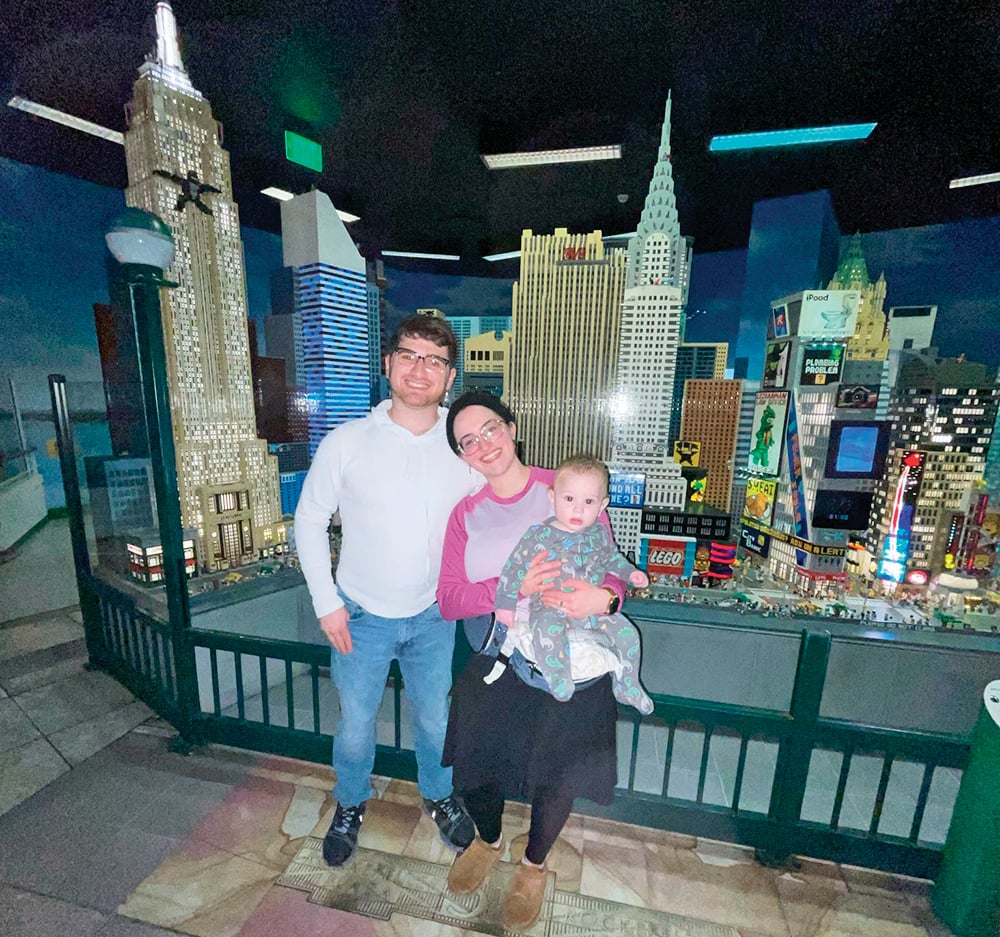
Typically, the month of Kislev is associated with the great miracle of Chanukah. Over the past 200 years, though, this month has acquired an additional historical layer: a period to consider and appreciate the enormous impact of chasidut upon the Jewish world. Having been falsely accused of treason and incarcerated, the first Lubavitcher Rebbe, Rabbi Shneur Zalman, was liberated on the 19th day of Kislev. Chasidim interpreted this release as a Divine signal that chasidut constituted a vital and necessary revolution for the Jewish imagination. As a result, the month of Kislev has developed into a month to study and appreciate the value and influence of the transformative ideas that chasidut has popularized.
Chasidut revolutionized religious consciousness on many fronts. Many of its themes have become so popular and so mainstream that we often fail to accurately identify them as chasidic influences. In particular, chasidut proclaimed perspectives that continue to influence modern perceptions upon living in Israel. To some, this may seem odd as, overwhelmingly—with the exception of Chabad—the modern chasidic world is often staunchly opposed to ideological Zionism. During the initial stages of our modern return to Israel, however, chasidut was deeply supportive of this national renaissance and resettlement. The founder of chasidut, the Ba’al Shem Tov, spoke lovingly about his desire to emigrate and launched a personal journey that he only terminated after repeated complications were interpreted by him as a signal that his presence was needed elsewhere. Following his lead, several of his students emigrated, and in 1777 a group of 300 chasidim led by Rabbi Menachem Mendel of Vitebsk, a student of the Maggid of Mezritch (himself student of the Ba’al Shem Tov), successfully emigrated to the north of Israel. In 1798, Rebbi Nachman spent a transformative half year visiting Israel and ultimately, among the founding generations of chasidut, he is the Rebbe most intimately associated with the Land of Israel. Well into the 18th century, ideological belief in emigration as well as material assistance to the fledgling Jewish communities in Israel each increased in chassidic circles. However, as the process of resettling Israel became associated with various secular movements of the 19th century, the world of chasidut became suspicious of this enterprise and suspected that it was just another “secularizing” agenda. Ultimately, in 1897, as Zionism became formally institutionalized as a secular nationalist movement, through the convening of the first Zionist Congress, much of the chasidic world distanced itself from formal Zionism. The Satmar Rebbe’s stinging sefer—written in 1961 and blaming Zionism for the horrors of the Holocaust—further created a fracture between the two worlds. Though much of the chasidic world does not subscribe to his strident ideas, it still finds itself unaffiliated with the ideology of formal Zionism.
Yet, chasidut introduced many seminal ideas that continue to thread our overall view of life in Israel. Chief among them is the notion that man plays an active role in the drama of redemption. Even before chasidut, Jews always felt empowered to advance both national redemption and, by consequence, the perfection of our world. Every mitzvah, every prayer and every good deed aggregates and accelerates the utopia we all work toward. In truth, our geulah or redemption was launched in 70 AD the moment the last Jew to leave conquered Jerusalem performed the first mitzvah. Though Jews have always contributed to the redemptive trajectory, chasidut sharpened our consciousness of redemption. As chasidut is predicated upon Kabbalah, it asserts a more acute awareness of the tragedy of exile and also demands a more fervent investment in the overall repair of human history. Every Jew patiently anticipates Moshiach, but chasidut encourages a more passionate form of “waiting” and a more intense coveting of the “end of time.” As a form of mysticism, chasidut doesn’t merely perfect our empirical reality but uncovers esoteric and invisible layers of human experience. In this respect it is more readily “apocalyptic” in intensifying our longing for redemption and for a different reality. Beyond merely accentuating “passionate waiting” chasidut portrays man as an active participant in the process of redemption rather than just a patient spectator waiting and hoping for the terminus of history. The concept that man can “directly” affect the redemptive process is a central tenet of life in Israel. Activating man as a partner with Hashem in the process of redeeming His fallen world is a fundamental concept to chasidut, and in its modern formulation deeply informs life in the modern State of Israel.
Beyond casting man as an active participant in geulah, additionally, chasidut affirmed the inalienability of every Jew regardless of religious practice or fidelity. In his Sefer HaTanya, the first Lubavitcher Rebbe asserts that every Jew has an “essence” of Hakadosh Baruch Hu breathed into them (chelek Eloka mi’Ma’al mamash) and this essence can’t be sullied or removed. In practice, a Jew may abandon mitzvot or betray ritual responsibilities. However, the unassailable essence of Hashem still remains pure and intact. By asserting this principle, chasidut carves out meaningful space and historical relevance for Jews who appear to have abandoned classic religious experience. In this aspect, chasidut is extremely inclusive and was launched, in part, based on the inability of a very rigid 18th-century Jewish society to incorporate fallen Jews. To many in the modern context, chasidut and its communities appear very insular and non-inclusive. Much of chasidut today has undergone a dramatic shift from inclusiveness to insularity due to two very traumatic recent historical experiences. Secularization of Judaism in the 19th century and the Holocaust in the 20th century each led to a recoil of the chasidic world. The impact of the Holocaust upon Eastern European chasidic communities was disproportionate to the impact upon the general Jewish world; the pre-war world of chasidut was literally ravaged as many chasidic societies were completely eliminated. However, the original fundamental ideas of chasidut are extremely inclusive and provide a system for incorporating Jews whose performance doesn’t meet the classic expectations of ritual.
Life in Israel offers a different, but structurally similar, method of inclusion for secular Jews. Through their dedication to land, people and history, secular Israeli Jews—even bereft of classic religious experience—still contribute to our common destiny and participate in the narrative of Jewish history. Of course, we aim for full Jewish identity—adherence to Jewish ritual and Torah study coupled with devotion and sensitivity to the arch of Jewish history. However, we recognize that Jewish identity is layered and ratify those who possess one, but not necessarily all, of the layers. Israel offers non-religious Jews an opportunity to express one layer of religious identity and includes them within our country and our future vision of our people. This inclusiveness of a broad spectrum of Jewishness is an idea that was instilled by chasidut and has deeply informed our modern attitudes in Israel.
By Moshe Taragin













